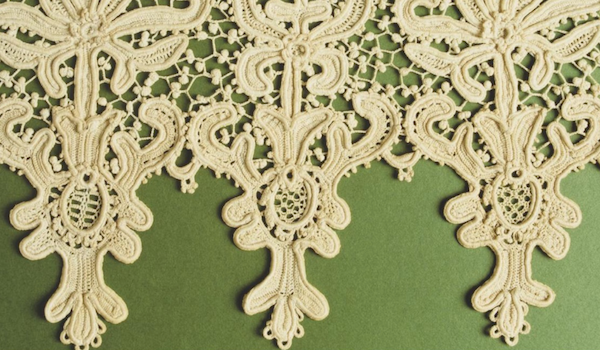
Life-Saving Lace
After St Patrick's Day, we revisited Selvedge issue 75 to take a look at how Irish lace once saved millions of lives during the 19th century...

You can find lace everywhere on the high street now, but throughout the centuries it has always served as a symbol for wealth and luxury, the rarest and most coveted kind emerging from what many imagined to be the beautiful green hills of rural Ireland. This image is in many ways true today, but it was not always necessarily the case...
What makes Irish lace distinctive now is its crocheted process. It is tradition that every motif on Irish lace (the rose, the leaves and the stems galore) are at first handmade separately, only later to be crocheted together in the final act of crafting this complex material. What you might not have known, is that this lace saved millions of Irish lives during the potato famine of the mid 19th century. As most of the population earned their income by farming, when the famine struck in 1845 it brought with it widespread devastation lasting for six years. During the blight, more than one million people fled to America with a further million starving to death. For those left struggling to make ends meet, lacemaking provided an effective, unique relief.
After being introduced into Dublin workhouses years beforehand, Irish lace had yet to find its style. Only once the aristocratic Mademoiselle Riego de la Blanchardiere published her crochet patterns in 1846, did Irish lace begin to find its footing. Taking influence from the highly expensive and coveted style of Venetian lace, Blanchardiere’s patterns provided the public with an easier, faster way to achieve this exquisitely detailed, decorative look. While the Venetians used needle-lace techniques requiring the utmost of patience as hundreds of stitches were hand-threaded to form the lace itself, with thanks to the country’s first publication of crochet patterns, the Irish bypassed needlework and headed straight for crochet...
You can read this article in full in Selvedge issue 75.
